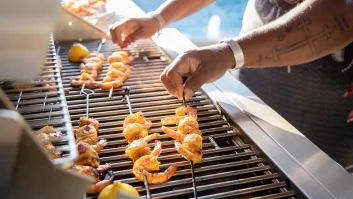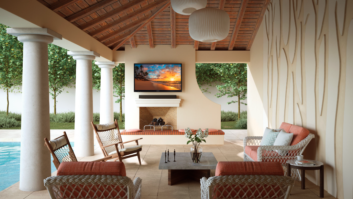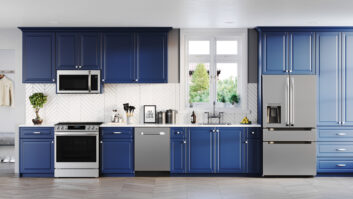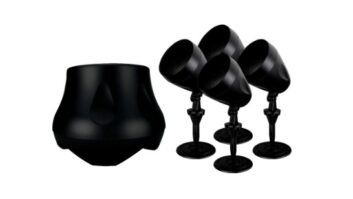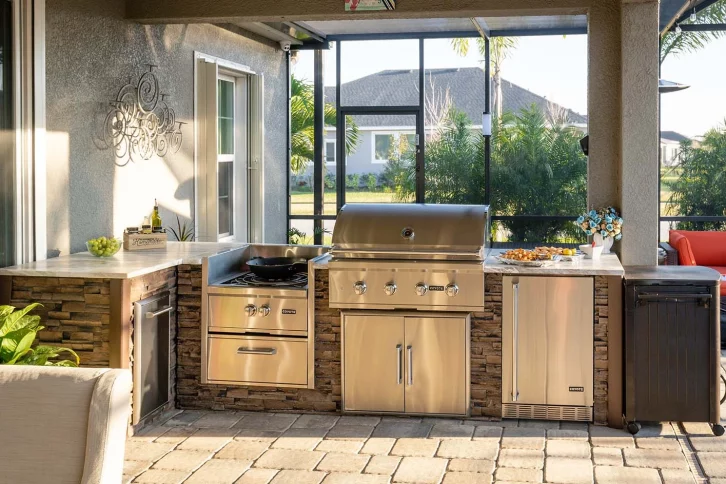
Building an outdoor kitchen is an exciting time. You’re probably already envisioning all the gatherings and great food you’ll eat. And for good reason! You’re in for years of enjoyment and unforgettable memories. But let’s not get ahead of ourselves, you need to build your grill island first!
And in such a project, there is a lot you need to know before you do so. We’ve condensed this into 10 main points to help you have a solid foundation of what an outdoor kitchen build involves. From there you’re free to start planning the outdoor kitchen of your dreams.
Let’s get started.
- Budget – Before you invest in anything, you must know the price tag. When it comes to your own outdoor kitchen project this isn’t a straightforward task. A modest budget can start as low as $5,000. Luxury outdoor kitchens, on the other hand, begin at $30,000 and go up from there. A mid-range budget will land you somewhere in the middle. Being that the average outdoor kitchen costs in the neighborhood of $12,000-$13,000, this can be a good starting point for most homeowners.
- Knowing Your “Why” – Knowing your “why” is highly relevant to your project. For example, when hosting is your why, you’ll want to optimize your grill island as an entertainment area. Often this will mean having outdoor bar seating and outdoor kitchen appliances to assist convenience. To bring in the first point, you have to balance your budget and your “why”.
- Design Principles – A large portion of your project will be devoted to design. After all, design directly plays into how you’ll be using your grill island! It’s a unique reflection of your why. Take budget, for example. Perhaps you can’t afford the design you want. What can be done? Review your “must haves” vs “nice-to-haves”.
- Have a Plan for Your Entire Outdoor Space – Planning your design is all well and good, but it doesn’t help you if you don’t have your backyard space planned! There are a couple factors to think about here. For one, what are you hoping to accomplish with your outdoor living space? Also, you want to ensure your project makes sense in your space. Place your outdoor kitchen where it feels most natural. Many homeowners believe they have more space than they do. Our eyes are bigger than our imaginations, if you will.
- Location, Location, Location – We often hear the word “ad nauseam” repeated when it comes to real estate. The same applies to your backyard space! Where you place your outdoor kitchen is important. As stated earlier, place your outdoor kitchen where it feels most natural. If you’re not happy with where you put your outdoor kitchen it’s going to be a constant annoyance.
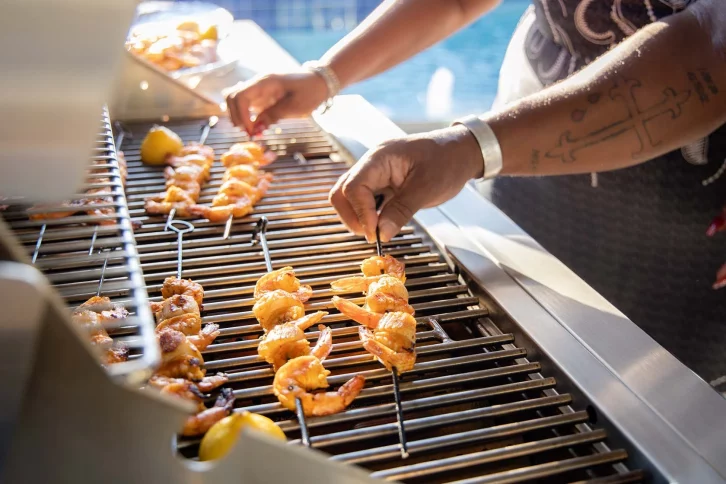 Utilities & Site Preparation – For site prep you’ll have to make a pitch assessment. Pitch has to do with the slope of your surface. If your surface has significant pitch, or “slope”, you’ll have some additional work in the building process. If left as-is, your outdoor kitchen won’t sit flush to the ground. Now, another factor of location is planning out utilities. If you want appliances that run on gas, electricity, or water, you must plan for utilities. Location becomes important here. The farther away your outdoor kitchen is from the house the more it will cost to run utility lines. What if you don’t want to deal with utility lines? Not a problem. You may just have to make concessions on your design. For example, rather than running a gas line, you can fuel your gas grill using a propane tank.
Utilities & Site Preparation – For site prep you’ll have to make a pitch assessment. Pitch has to do with the slope of your surface. If your surface has significant pitch, or “slope”, you’ll have some additional work in the building process. If left as-is, your outdoor kitchen won’t sit flush to the ground. Now, another factor of location is planning out utilities. If you want appliances that run on gas, electricity, or water, you must plan for utilities. Location becomes important here. The farther away your outdoor kitchen is from the house the more it will cost to run utility lines. What if you don’t want to deal with utility lines? Not a problem. You may just have to make concessions on your design. For example, rather than running a gas line, you can fuel your gas grill using a propane tank.- Hire a Contractor or DIY? – When it comes to building an outdoor kitchen the primary categories you have to choose from are hiring a contractor or DIY. Both options are excellent! It simply depends on your needs, budget and expectations.
- Build, Install, or Assemble? – Here’s the thing. If you want to go DIY there are three routes you can go down. You can build your own outdoor kitchen from scratch, install a partially completed outdoor kitchen, or assemble an outdoor kitchen that’s 95% completed.
- Durability & Performance – It doesn’t matter which way you cut it, outdoor kitchens are a significant investment. This project will require a large amount of both time and money. Therefore, you want your investment to last. There’s a reason the outdoors has a reputation for being harsh, it simply is! From snow, to ice, to whipping winds, to ocean air, to torrential downpours – your outdoor kitchen needs to be able to handle whatever weather is thrown at it. No matter where you live, using durable materials will be important.
- Don’t Forget Safety – Safety first! It’s not glamorous, but it is quite literally a matter of life and death. As long as you’re planning for safety before you build there’s nothing you have to worry about. If you’re working with an outdoor kitchen company, the safety aspect should already be handled for you. If you’re hiring a contractor or building from scratch, make sure the builder is accounting for ventilation and other safety measures.
This article originally appeared on the RTA Outdoor Living blog and is republished with permission.
About the Author
James King is an outdoor kitchen enthusiast with an extensive background in outdoor kitchen design and construction who has been involved in the outdoor living industry since graduating high school. He is passionate about helping people with their outdoor kitchens and enjoys traveling, reading, learning and spending time outdoors enjoying the sun and improving the experience of buying an outdoor kitchen.
See also: 5 Outdoor Living Trends That Will Drive Consumer Spending This Summer




